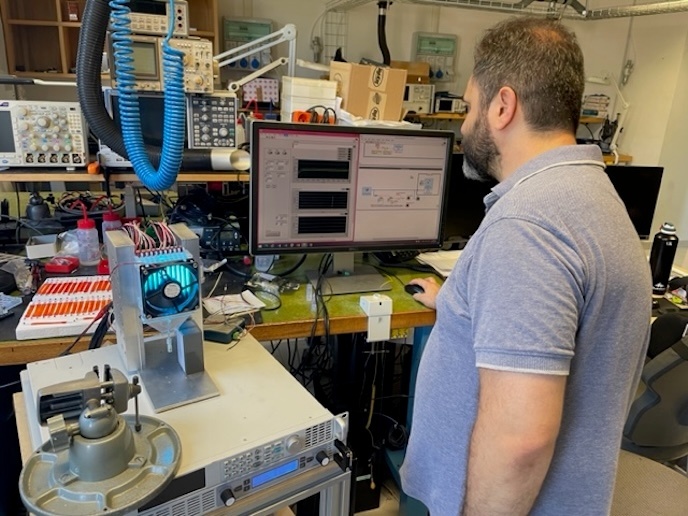Innovative monitoring system boosts ventilation capacity
The COVID-19 pandemic placed unprecedented pressure on the supply of intensive care unit (ICU) ventilators. During the early days of the pandemic, hospitals were simply overwhelmed with patients with severe respiratory complications. “The rapid spread of the virus led to a surge in critically ill patients requiring mechanical ventilation,” explains AIRMED project coordinator Alban de Luca, CEO of Archeon(opens in new window) in France. “This far outstripped available supply across many regions.” On the supply side, ventilator supply chains hit bottlenecks, and manufacturing plants quickly hit capacity. “Ventilators are complex machines,” adds de Luca. “Producing them involves not just assembly, but also rigorous testing to ensure they work correctly.”
Portable monitoring for basic ventilation systems
The challenges presented by the COVID-19 pandemic led to the increased usage of what are known as entry-level ‘emergency’ ventilators. These devices are less expensive and simpler to manufacture, but often lack advanced patient monitoring functions critical for treating very ill patients. “While these basic ventilators can be beneficial for less severe cases or as a temporary solution, they are not really suitable for intensive care,” says de Luca. The AIRMED project sought to address this, by developing and trialling the first independent ventilation monitoring system. The project built on technology already developed by Archeon. The system itself consists of a portable medical device that provides caregivers with real-time feedback on the ventilation being administered. It features a gas flow sensor attached to a small electronic device, which uses artificial intelligence-based algorithms to analyse the patient’s lung profile. “This project was designed to demonstrate the feasibility of using basic ‘emergency’ ventilators during viral pandemics or mass casualty events, together with our device,” explains de Luca. “This could help caregivers overcome many of the challenges that were encountered during the COVID-19 pandemic.”
Bringing life-saving technology to patients
The project enabled Archeon to develop and validate its low-cost, independent monitoring system. Demonstrations included both lab tests and clinical trials with patients. “The results surpassed our expectations,” says de Luca. The company is now poised to enter the market at commercial scale, through partnering with key leaders in patient monitoring. “This moment marks a significant milestone,” notes de Luca. “We believe we are now well-placed to swiftly bring this life-saving technology into patient care.”
Establishing a new standard in patient care
Next steps include integrating the technology with existing patient monitoring systems, and enabling the documentation of ventilation parameters within electronic patient care records(opens in new window). This will help to secure the necessary market authorisation. “We then plan to establish this innovation as a standard in patient care, and ensure its availability across all patient monitoring platforms,” adds de Luca. Over the long term, having comprehensive ventilation strategies in place for emergency situations will help to save lives. “We believe that using our device in ICUs, when no critical care ventilator is available, will make a big difference in fighting a viral epidemic, but also be useful in everyday practice,” says de Luca.







